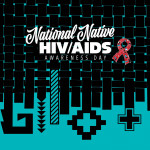
The global AIDS response is at a precarious point—partial success in saving lives and stopping new HIV infections is giving way to complacency. At the halfway point to the 2020 targets, the pace of progress is not matching the global ambition. This report is a wake-up call—action now can still put us back on course to reach the 2020 targets.
The number of AIDS-related deaths is the lowest this century, with fewer than 1 million people dying each year from AIDS-related illnesses, thanks to sustained access to antiretroviral therapy. Three out of four people living with HIV now know their status—the first step to getting treatment. And now a record 21.7 million people are on treatment—a net increase of 2.3 million people since the end of 2016. The scale-up of access to treatment should not be taken for granted, though. In the next three years an additional 2.8 million people must be added each year, but there are no new commitments to increase resources, there is an acute shortage of health-care workers and there is continuing stigma and discrimination.
There is a prevention crisis. The success in saving lives has not been matched with equal success in reducing new HIV infections. New HIV infections are not falling fast enough. HIV prevention services are not being provided on an adequate scale and with sufficient intensity and are not reaching the people who need them the most. Acceptance of condoms, voluntary medical male circumcision, pre- exposure prophylaxis, cash transfers must be increased rapidly and not be secondary prevention tools. And I await the day when there is a functional cure and a vaccine against HIV.
Children are being left behind. The good news is that 1.4 million new HIV infections have been averted since 2010, but I am distressed by the fact that, in 2017, 180 000 children became infected with HIV, far from the 2018 target of eliminating new HIV infections among children. While the overall HIV treatment level is high, there is a huge injustice being committed against our children—only half of under-15s living with HIV were being treated last year.
Stigma and discrimination still has terrible consequences. The very people who are meant to be protecting, supporting and healing people living with HIV often discriminate against the people who should be in their care, denying access to critical HIV services, resulting in more HIV infections and more deaths. It is the responsibility of the state to protect everyone. Human rights are universal—no one is excluded, not sex workers, gay men and other men who have sex with men, people who inject drugs, transgender people, prisoners or migrants. Bad laws that criminalize HIV transmission, sex work, personal drug use and sexual orientation or hinder access to services must go, and go now.
Women and girls continue to be disproportionately affected. It is outrageous that one in three women worldwide has experienced physical or sexual violence. We must not let up in our efforts to address and root out harassment, abuse and violence, whether at home, in the community or in the workplace. UNAIDS stands firm in its commitment to act against harassment, abuse and violence, wherever they occur.
The upcoming United Nations High-Level Meeting on Tuberculosis is a huge opportunity to bring AIDS out of isolation and push for the integration of HIV and tuberculosis services. There have been major gains in treating and diagnosing HIV among people with tuberculosis, but still, decades into the HIV epidemic, three in five people starting HIV treatment are not screened, tested or treated for tuberculosis, the biggest killer of people living with HIV. Equally important is integration of HIV services with sexual and reproductive health services and developing strong links with services for noncommunicable diseases. Our goal must be to save lives holistically, not disease by disease, issue by issue, in isolation.
There is a funding crisis. I am heartened by the fact that resources for AIDS increased in 2017, but there is still a 20% shortfall between what is needed and what is available. And we cannot afford any cuts in international assistance to the AIDS response. A 20% cut in international funding will be catastrophic for the 44 countries that rely on international assistance for at least 75% of their national AIDS responses. A fully funded AIDS response is non-negotiable, as is funding for universal health coverage.
AIDS is not over, but it can be. At the halfway point to the 2020 targets, we must recommit ourselves to achieve them. The successes in HIV treatment show what can be done when we put our minds to it. People living with HIV are leading longer, healthier lives. But we still have miles to go. We have promises to keep.
Michel Sidibé is executive director of UNAIDS. Click here to read the Global AIDS Update 2018.







Comments
Comments